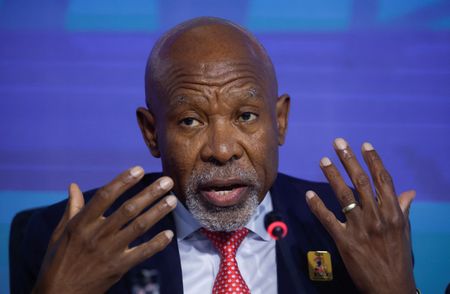By Chibuike Oguh
NEW YORK (Reuters) -The U.S. dollar was broadly lower against major currencies on Wednesday with market sentiment weakened by the continuing trade kerfuffle between the U.S. and China.
Traders perused comments from Federal Reserve Chair Jerome Powell for cues on upcoming rate cuts amid a U.S. government shutdown, which has hampered the timely release of key data.
The dollar weakened 0.36% to 151.29 against the Japanese yen and was down 0.27% to 0.799 against the Swiss franc, on track for the second straight session of losses against both safe-haven currencies.
Top U.S. officials, including Treasury Secretary Scott Bessent and Trade Representative Jamieson Greer, blasted China’s major expansion of rare earths export controls as a threat to global supply chains.
Greer described China’s export controls as a complete repudiation of U.S.-Chinese trade agreements over the past six months although he and Bessent stressed that Washington did not want to escalate the conflict. President Donald Trump had threatened to impose tariffs on China last week in retaliation.
The Chinese commerce ministry defended its export controls on rare-earth minerals, pointing to a series of U.S. measures on Chinese goods and companies and calling it hypocritical.
“The market is showing an impressive ability to shrug off trade-related headlines and there’s a firm belief that the US and China will find a way to move forward and will make an agreement,” said Adam Button, chief currency analyst at ForexLive. “But the headlines continued to be inflammatory, including today from Bessent and Greer. But the market saw how Trump quickly de-escalated over the weekend and doesn’t yet believe he wants a real fight.”
The dollar index, which measures the greenback against a basket of currencies including the yen and the euro, fell 0.33% to 98.74, on track for the second consecutive session of losses.
Powell, who in a speech on Tuesday left the door open to rate cuts by saying the U.S. labor market remained mired in low-hiring, low-firing doldrums. He said the absence of official economic data due to the government shutdown has not prevented policymakers from being able to assess the economic outlook, at least for now.
Markets are currently priced for a quarter-point cut at the October 28-29 Fed gathering and another at the following meeting in December, followed by three more cuts next year, according to LSEG data.
“There’s a debate right now about whether Powell had the jobs numbers or not before the government shut down. There’s a persistent negative bent to his comments about the jobs market that has people believing that he saw weak jobs numbers and that’s part of the reason the dollar is weak and that Treasury yields are back flirting around 4%,” Button added.
The yield on benchmark U.S. 10-year notes fell 0.9 basis points to 4.013%. Wall Street stocks were higher as companies continued to report strong results as the quarterly earnings season kicked off.
The Dow Jones Industrial Average rose 0.56%, the S&P 500 rose 0.84% and the Nasdaq Composite rose 1.12%.
The euro rose 0.25% to $1.1635 after gaining 0.3% in the previous session, supported by the French government’s proposal to suspend landmark pension reforms.
The New Zealand dollar edged up only 0.24% to $0.5729, after dipping to a six-month low of $0.56839 on Tuesday. The Aussie climbed 0.54% to $0.652, after falling 0.5% a day earlier, when it touched the lowest since August 22 at $0.64405.
(Reporting by Chibuike Oguh in New York; Additional reporting by Kevin Buckland in Tokyo and Lucy Raitano in London; Editing by Shri Navaratnam, Toby Chopra and Aurora Ellis)











